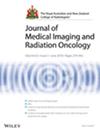Radiology Registrar Learning in an Online World
Abstract
Introduction
Radiology education has evolved significantly with the rise of online learning resources. While digital platforms are now integral to trainee study, the growing volume of content and variable access present challenges. Globally, studies have highlighted the benefits of curated digital learning, yet there is limited data on how radiology trainees in Australia and New Zealand use online resources and integrate them with traditional materials. This study aimed to evaluate the study habits of RANZCR (Royal Australian and New Zealand College of Radiology) radiology trainees, focusing on resource usage, perceptions of teaching modalities, and engagement with the RANZCR curriculum.
Methods
A cross-sectional study of current RANZCR trainees was performed, with data collected via an anonymous, voluntary online questionnaire distributed to all accredited RANZCR trainees via official College communications and at key educational events. The questionnaire covered six domains: demographics, textbook use, online resource use, in-person and remote teaching, and attitudes towards the curriculum. Both quantitative and qualitative data were collected. Descriptive statistics and group comparisons were performed using SPSS and OpenEpi. Free-text responses underwent thematic analysis.
Results
A total of 145 trainees responded (22% response rate). 74% reported using online resources for over half of their learning, while only 15% relied similarly on textbooks. Cost was a major barrier, with 84% of trainees limited by subscription fees. Case-based, in-person teaching was consistently rated the most effective teaching method, though 89% also valued on-demand didactic content. Qualitative analysis revealed learners valued the convenience of online learning, but raised concerns over variability in teaching quality and a perceived disconnect between the curriculum structure and exam relevance.
Conclusion
This study demonstrates a clear shift towards online learning among Australian and New Zealand radiology trainees, reflecting broader global trends. While digital resources are preferred for their accessibility and targeted content, cost and content overload remain key barriers. Greater institutional support, structured guidance on resource use, and refinement of the RANZCR curriculum are needed to ensure the curriculum aligns with modern study habits and exam preparation needs.

 求助内容:
求助内容: 应助结果提醒方式:
应助结果提醒方式:


